
Orchard Tricks case study: Create your personal blog on DotNest
George Roubie, an Orchard developer from Greece runs his personal development blog on DotNest as Orchard Tricks. Now he has summarized how he has created his site in this detailed case study. Enjoy!
This is a guest post by George Roubie.
Choose a template
You can create your custom theme from scratch and upload with the Media Theme Deployment. On the other hand, if you don’t want to write everything yourself, you can choose one theme from the built-in ones. In Orchard Tricks I am using the PJS.ReTouch.
Basic customization of the template
Theme Options
Some themes like PJS.ReTouch or other PJS themes have their own settings so you can change the appearance as you like.
Change the favicon
After you change the options of your theme you should change the favicon of your blog.
- Upload your favicon in the media folder.
- Go to Theme Override Settings and add your favicon URL.
![]()
Features
Analytics
Every site needs Google Analytics, so if you want to track your users you have to enable the Simple Analytics module. After this you need to go to Settings and add the code that Google gave to you.
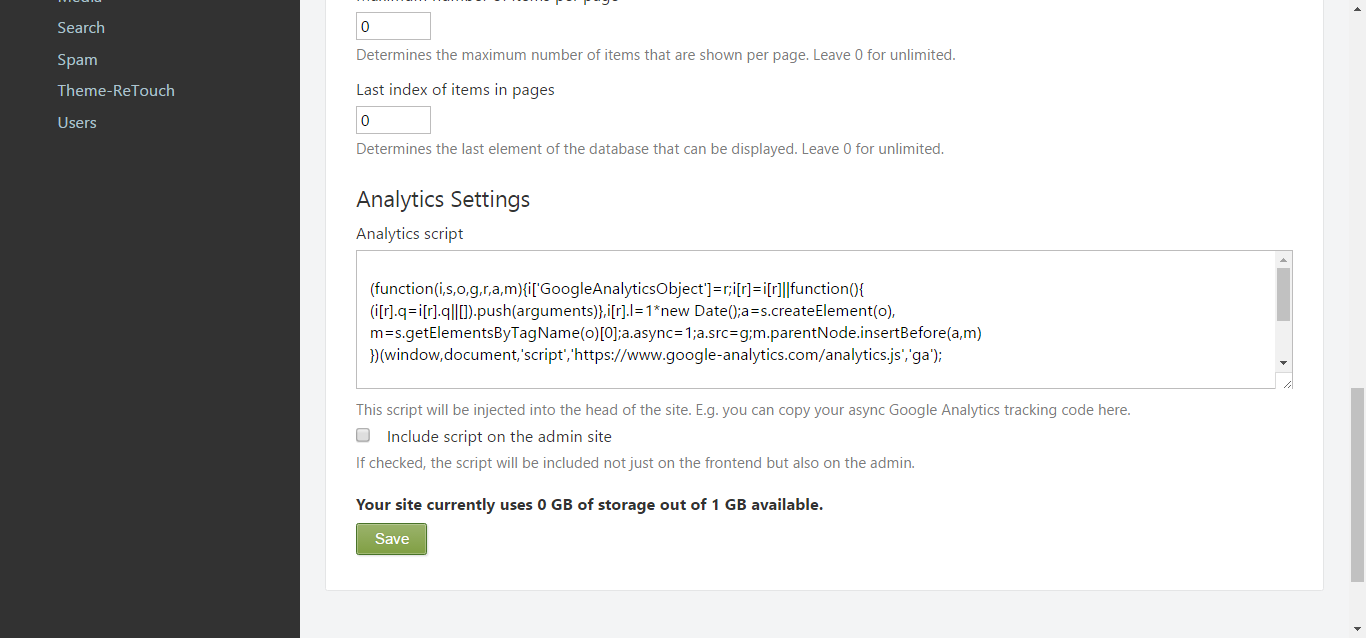
Contact form
A contact form is required if you want to have some feedback from your users. You have to enable the Dynamic Forms module so you can create a form with drag-and-drop.

If you want to prevent bots from submitting your contact form you have to add a Re-Captcha element to your form, but first you have to enable the Anti-Spam Elements feature.
The problem at this point is that you have to sign in to the dashboard every day to check if someone has sent you a message. This problem is solved if you create a workflow that notifies you with an email on form submit. You have to enable the Email Messaging and the Email Workflow Activities features for this. You don’t need to fill the STMP settings because DotNest has already filled that for you.
Your workflow will look like this:

Search form
Every site needs one and the installation is so easy. Go to Modules > Recipes > Search and click Execute.
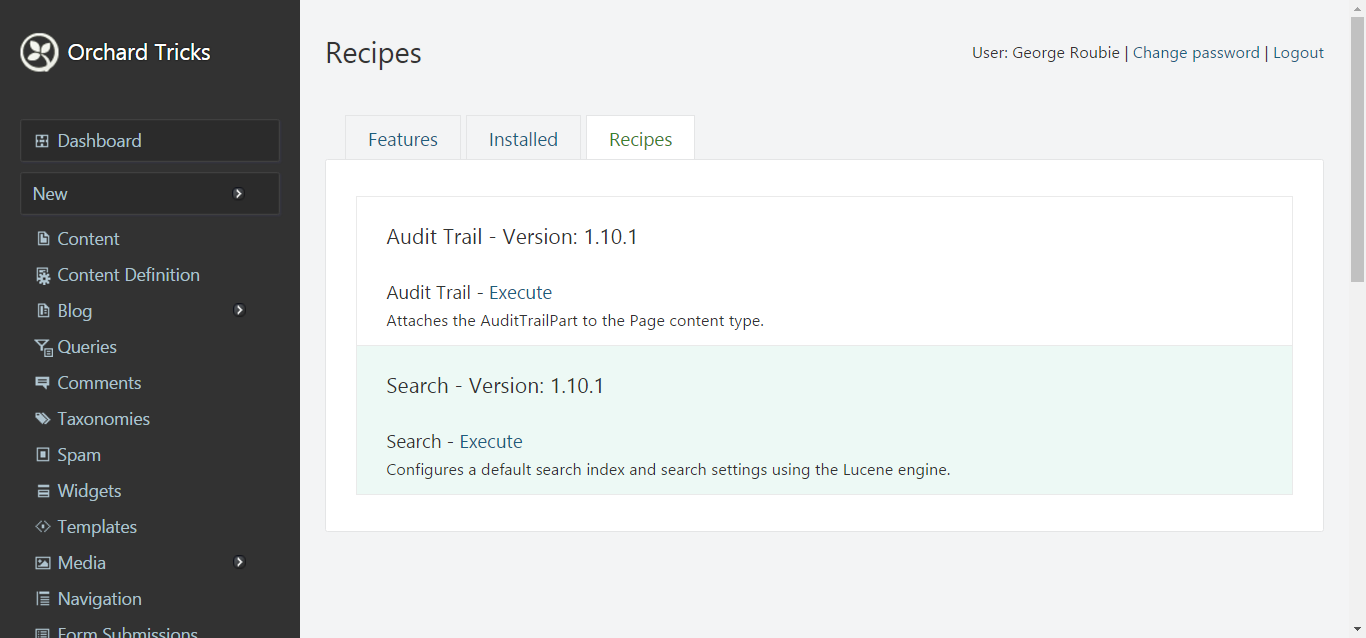
The Search is now working but you can go to content definition and add more content that will appear in the search results.
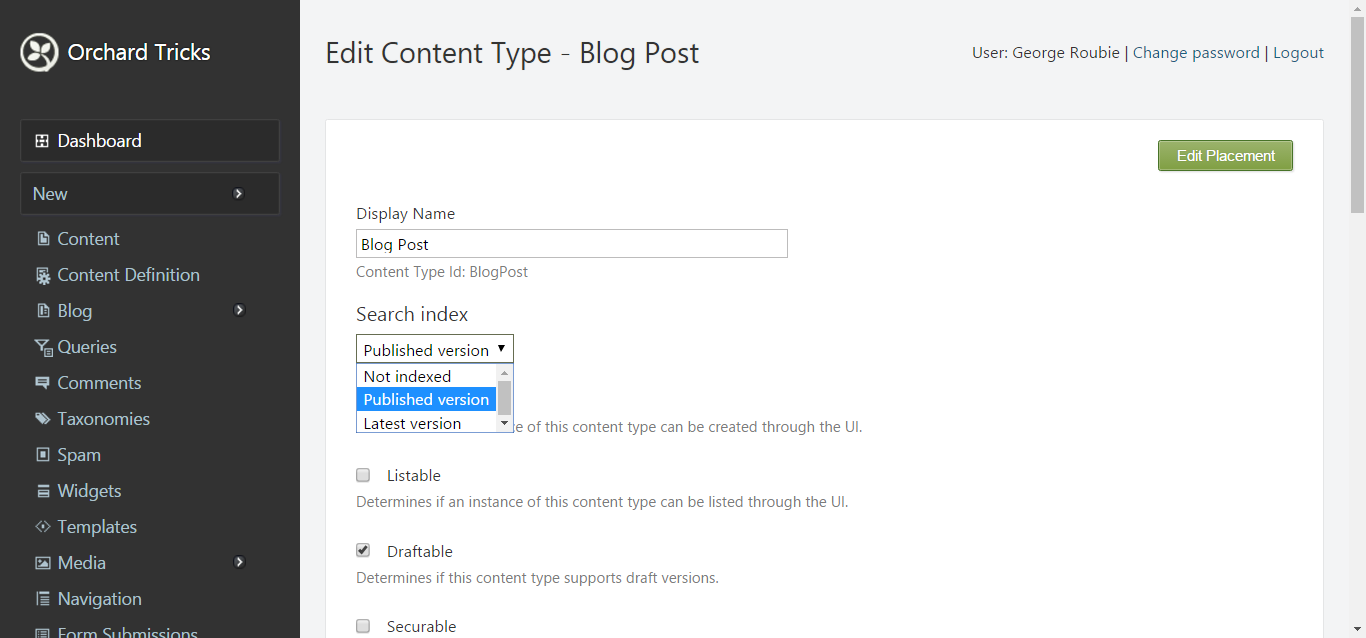
The final step is to go to Widgets and add the Search Form Widget.
Useful Widgets
The most useful widgets for a blog are:
- Recent Blog Posts
- Tag Cloud
These I also added on Orchard Tricks.
Customize blog posts
Styling
You can easily overwrite the styling of the blog post, by enabling the Theme Override feature, then going to Theme Override Settings and adding your CSS to Styles > Custom Styles.
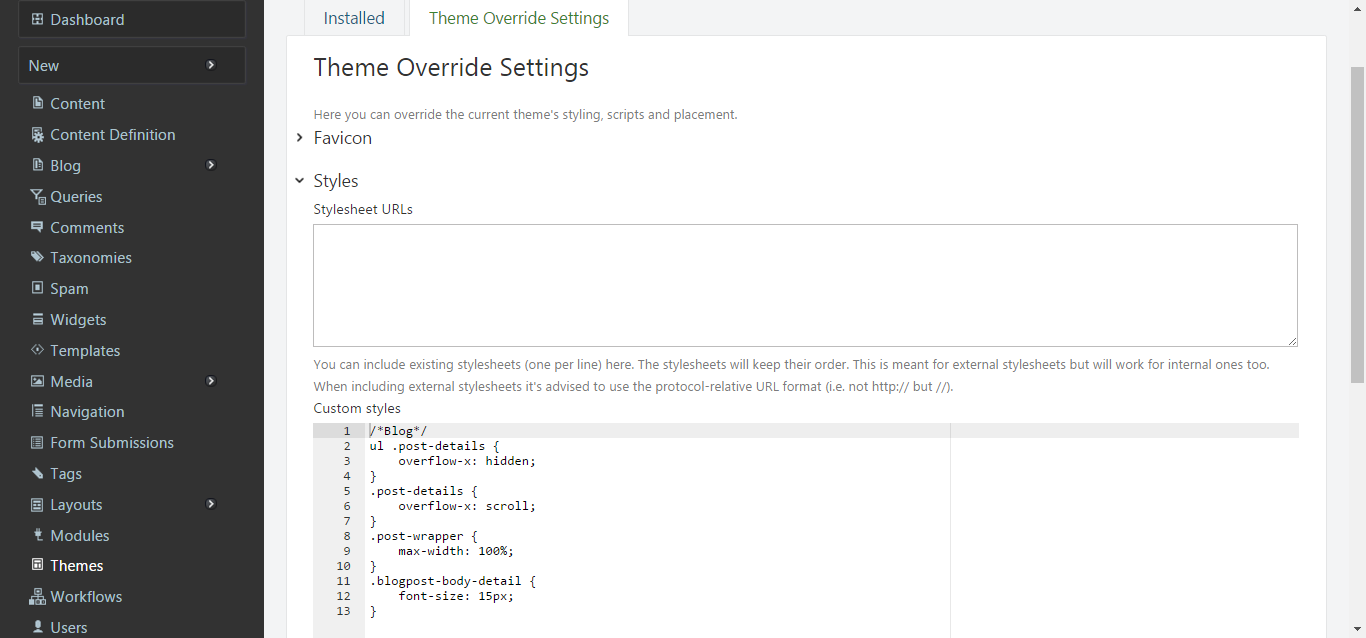
This stylesheet will be included last, so you can override any styling.
Comments
I actually don’t like Orchard Comments and I always remove the Comment Part from Blog Posts. Instead I add Disqus comments.
You will have to enable Liquid Markup Templates module so that you can override how Blog Posts are displayed. I prefer to add the comments after the Body so I am overriding the Blog Post Body Part.
You have to create a template with the name Parts_Common_Body__BlogPost:
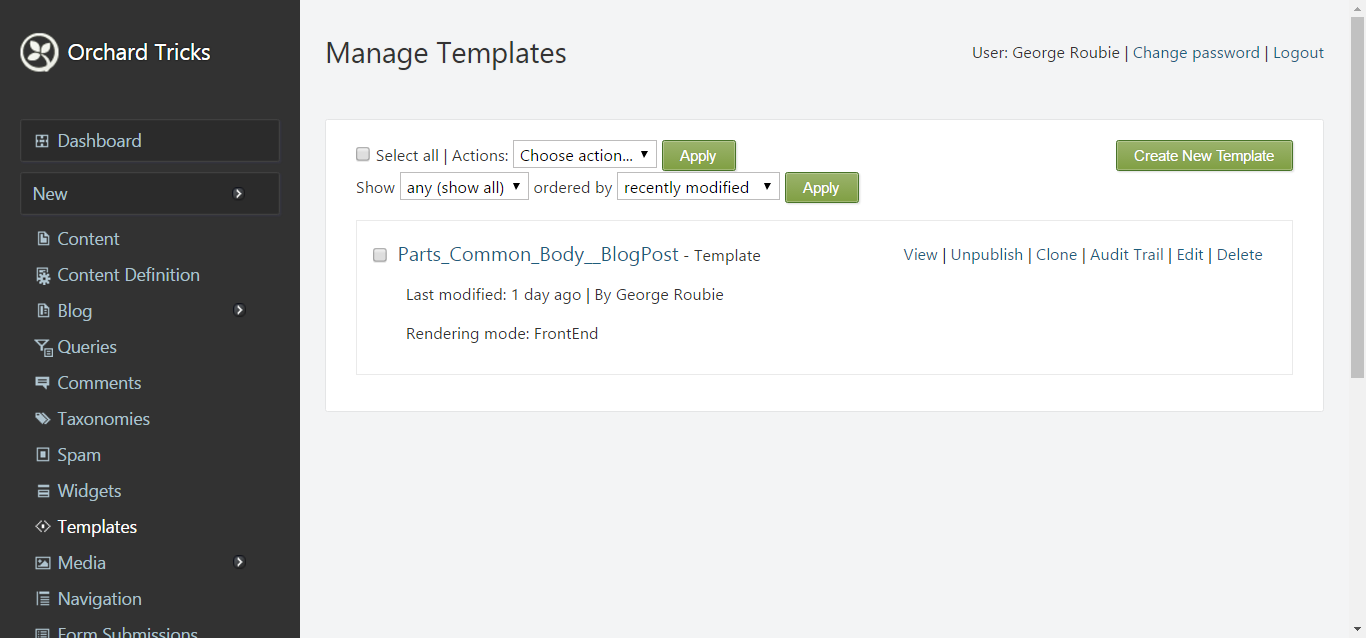
Your template should look like this:

Liquid Markup is very powerful and you can do a lot of content customization.
You can check out the public blog at https://orchardtricks.dotnest.com/. Go ahead and create your DotNest site for free to build your own blog!